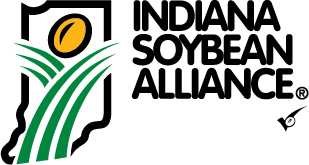1980
Twenty-six states passed soybean checkoff legislation. Indiana and Ohio are the only two soybean producing states without soybean checkoff programs.
1990
Congress passed the Farm Bill which included a provision for a Soybean Promotion and Research Checkoff.
1991
The soybean checkoff is approved and the Indiana Soybean Development Council opens its office in Lebanon, Indiana. A board of 18 farmers is elected.
1994
Soy-based crayons with the first Student Soybean Innovation Competition at Purdue University.
Forty-four percent of U.S. soybean farmers vote in the referendum to continue the soybean checkoff.
1995
The soybean checkoff refund program is discontinued. Many farmers lobbied against refunds saying that it was not fair that some farmers paid the checkoff while others received refunds.
1996
The Indiana Soybean Development Council creates a soybean science kit and places it in 100 Indiana elementary schools.
1997
The Indiana Soybean Development Council changes its name to the Indiana Soybean Board. As part of the change, the board of directors expands to 36 farmers and a staff which was employed by the Indiana Soybean Growers Association, is now employed by the checkoff-funded board.
The Indiana Soybean Development Council and Dixon-Ticonderoga launches the sale of soybean crayons. This is the first product from the Student Soybean Innovation Competition to be successfully commercialized.
1998
The Indiana Soybean Board introduces the first soy-based candle at the Farm Progress Show in Windfall, Indiana. This is the second product from the Student Soybean Innovation competition to be commercialized.
1999
Based on years of checkoff-funded research, the U.S. Food and Drug Administration announces the soy health claim which changes the way soy foods are labeled.
2000
The U.S. Department of Agriculture announces that it will not conduct a referendum on the soybean checkoff. Less than three percent of U.S. soybean farmers signed a request for referendum form; less than the 10 percent needed to push the program into a referendum.
2001
CystX germplasm is launched at the Farm Progress Show in Lafayette, IN. Discovered by checkoff-funded researchers, CystX is the first new SCN-resistant germplasm in 25 years.
The Indiana Soybean Checkoff celebrates its 10th anniversary.
2002
Indiana farmers sign soy gelatin contract with California based LuLu’s Foods. NuSoy get is packed with soy protein and is the first vegan gelatin on the market.
2003
Hamilton County Indiana schools cut bus emissions by switching to soy-based biodiesel fuel.
2004
Indiana Soybean Board sponsors Mideast Conference in Istanbul.
The Indiana Soybean Board partnered with Purdue School of Agriculture to fund and endowed chair in soybean utilization.
2005
Hoosiers have consumed almost 50 million gallons of soy biodiesel to power Indiana school busses, farm equipment and more.
Indiana Corn organizations sign management agreement with the Indiana Soybean Board.
Cargil named the exclusive licensee for Indiana Soybean Board’s candle patent.
2006
Two hundred and fifty farmers sign the Declaration of Energy Independence.
Indiana begins producing soy biodiesel.
Indiana soybean farmers grant helps worldwide avian influenza campaign.
Soybean Quality Rewards program offered at two Indiana sites.
2007
The Indiana Soybean Board and the Indiana Soybean Growers Association merge to from the Indiana Soybean Alliance. The board is composed of 24 volunteer farmers.
ISB board member Roger Hadley is awarded ASA Lifetime Achievement Award.
Dr. Bernie Tao, Purdue University, receives USB National Soybean Utilization award.
The world’s largest integrated soy biodiesel facility, Louis Dreyfus, opens its doors in Claypool, IN.
2008
Bell Aquaculture, the nation’s largest yellow perch aquaculture farm opens it’s doors.
2009
ISA farmers travel to Alaska to test permaflo technology. Permaflo is a biodiesel formulation that reduces gelling of biodiesel in cold weather conditions.
ISA partners with the Indianapolis Colts to develop Hoosier Horsepower educational program.
2011
Soybeans farmers host the Year of the Soybean” at the Indiana State Fair.
Indiana Soybean Alliance forms the Soy Aquaculture Alliance which is focused on expanding the U.S. aquaculture industry through increased use of soybeans in fish diets.
Infield Advantage was created in order to offer farmers resources and tools to apply and evaluate the use of cover crops on their farms.
2013
The Glass Barn opens at the Indiana state fair. Created in order to give fairgoers a transparent look at modern agriculture, the Glass barn also hosts field trips for Indiana students.
2016
The Indiana Soybean Alliance celebrates 50 years of serving Indiana’s farmers.
Indiana Soybean Alliance along with the Indiana Corn Marketing Council invests in a new automated plant phenotyping facility at the Purdue Agronomy Center for Research and Education. The Indiana Corn and Soybean Innovation Center opened on August 29, 2016.
2019
PoreShield concrete durability enhancer, developed and patented by ISA was applied to a newly constructed ramp interchange in Indiana.
Soybean-based drinking straws won the 25th annual Student Soybean Innovation Competition.
2020
The Upper White Cover Crop Program was recognized by the White River Alliance as recipient of the 2020 Exceptional Commitment to Watershed Protection Award.
Indiana Soybean Alliance for the B20 Club of Indiana, a collaboration between the Indiana Soybean Alliance and the American Lund Association which promotes the use of B20 fuel.
The B20 club of Indiana was created as a joint effort between the ISA and the American Lung Association. This organization was formed as a way to recognize and support Indiana-based fleets running on biodiesel blends of B20 or higher.
2021
A 20-foot tall interactive combine simulator was installed at the Glass Barn. Fairgoers could now see a combine up close and learn about how farmers harvest their crops.
